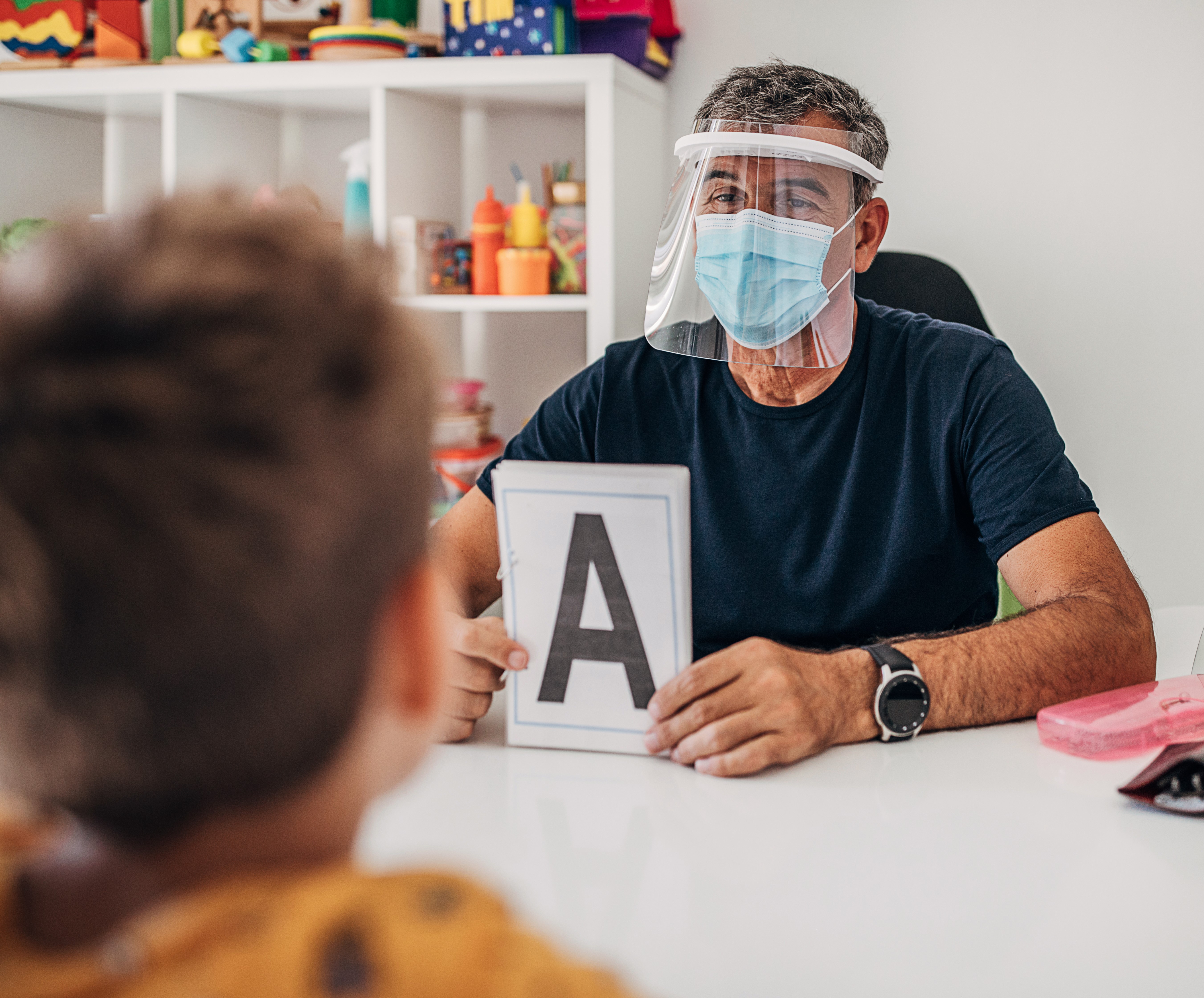What is Speech and Language Therapy?
Speech and language therapy is a service performed by a Speech-Language Pathologist (SLP), who is considered an expert in communication. Through therapy, SLPs work to improve the lives of individuals of all ages by working on speech sounds, language, social communication, voice, fluency and swallowing. SLPs believe that communication is not just a human right, it is essential to working, playing, and living.
At TES, our SLPs offer therapy services in a variety of settings including schools, clinics, in client’s homes, online and throughout the community. They are also involved in the supervision of Speech-Language Pathology Assistants, recent graduates, and students preparing to enter the field.
Our Speech Therapists
Speech-Language Pathologists typically hold a Master’s level degree in Speech-Language Pathology. In some states, they can also work under a credential or license. To become certified through the American Speech-Language and Hearing Association (ASHA), an SLP will have also completed a Clinical Fellowship Year under the direct supervision of a licensed SLP after graduation from an accredited Master’s degree program.
At TES, our SLPs serve clients of all ages from infants to adults. Our SLPs assess, diagnose, and treat clients according to state and federal guidelines in the areas of Speech Sounds (articulation and phonology), Language (expressive and receptive), Literacy, Social communication (pragmatics), Voice, Fluency (stuttering), Cognitive-communication, and Feeding and swallowing (can be called dysphagia).

Speech and Language Therapy Benefits
When a child or adult can effectively communicate his or her wants and needs the world opens up and there is reduced frustration, isolation, and interdependence on others. If a person cannot communicate their basic needs, ongoing or episodic speech and language therapy is essential. Successful treatment can lead to improved social skills, better grades in school, advancement at the workplace, improved quality of life, and better relationships with family and friends.
Individuals use a variety of tools to communicate including speech, facial expressions, eye contact, writing, typing, and gestures. An SLP can help bridge the gap to communication by working with a client on providing alternative and augmentative communication (AAC) systems. These systems range from low-tech to high-tech including picture boards, switches and buttons, communication books, speech-generating devices, sign language, gestures, choice cards, apps, and mobile devices.
Another area of specialty for our SLPs is in feeding and swallowing. Through feeding and swallowing therapy, our SLPs can help preemies and infants to take a bottle or develop alternative ways to feed, young children to resolve feeding difficulties like texture aversion and picky eating, and adults to regain safe eating skills following a stroke or head trauma.

Our Experts are Experienced in
TES’ approach to Speech Therapy
How do we make therapy fun?
We make therapy fun by incorporating games, music, cooking, play, and practical skills into our treatment plans.
How do we work as a team?
Our SLPs work in collaboration with the families and other professionals to ensure that the treatments are aligned to obtain the best possible outcomes for our clients.
How do we include the family?
The families are encouraged to participate and learn in therapy whenever possible in order for our clients to reach their full potential in all aspects of their lives. Family participation helps to facilitate carryover of newly learned skills.




